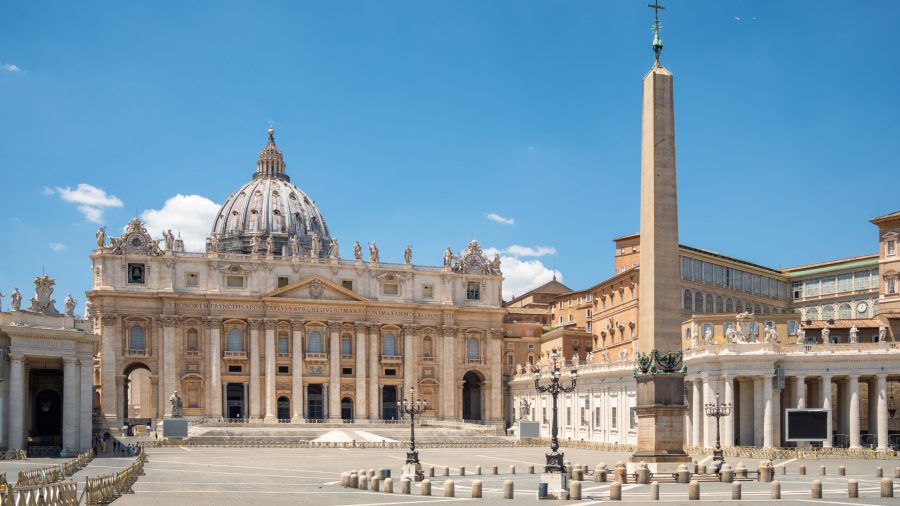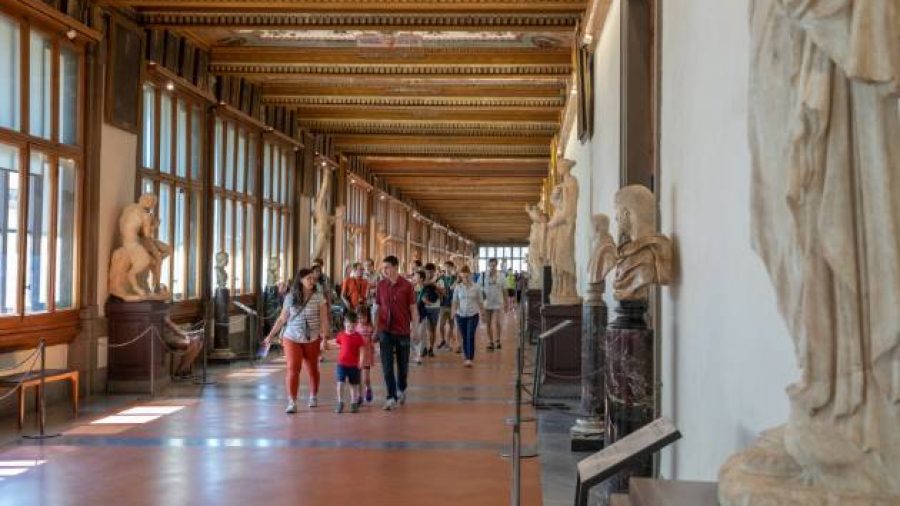Best Museums in Florence: Top 5 Masterpieces at the Uffizi

Florence, the cradle of the Renaissance, is home to some of the most significant artistic treasures in the world. Among its many cultural landmarks, the Uffizi Gallery stands out as one of the best museums in Florence, a must-visit for art lovers. As one of the oldest and most famous museums globally, the Uffizi houses an extraordinary collection of masterpieces, showcasing the evolution of Western art from the medieval period to the Renaissance and beyond. This blog post will guide you through the top five must-see masterpieces at the Uffizi, providing insights into their historical context and significance. Whether you’re a seasoned art enthusiast or a curious traveler, these works are essential to understanding Florence’s rich cultural legacy.
A brief introduction to the Uffizi Gallery
The Uffizi Gallery, or Galleria degli Uffizi, was commissioned by Cosimo I de’ Medici in 1560 as a government office building (hence the name “Uffizi,” meaning “offices” in Italian). Under the direction of Giorgio Vasari, a prominent architect and artist, the building was constructed in a U-shaped layout along the banks of the Arno River. In 1581, Francesco I de’ Medici converted part of the structure into a gallery to display the family’s vast art collection, making it one of the first modern museums.
Today, the Uffizi is renowned for its extensive collection of Renaissance art, featuring works by artists such as Leonardo da Vinci, Michelangelo, Raphael, Titian, and Sandro Botticelli. The museum’s unique layout allows visitors to walk through a chronological journey of art history, making it an educational and inspiring experience.
The best museums in Florence: Top 5 at the Uffizi Gallery
1. The Birth of Venus by Sandro Botticelli
Arguably the most iconic painting at the Uffizi, Sandro Botticelli’s The Birth of Venus (c. 1485–1486) is a masterpiece that embodies the spirit of the Renaissance. The painting depicts the goddess Venus emerging from the sea on a shell, a representation of her birth according to classical mythology. This moment of divine beauty is surrounded by figures representing the wind gods and a handmaiden ready to clothe the goddess.
The composition is filled with symbolism. Venus, often associated with love and beauty, is depicted with an ethereal quality that emphasizes the divine nature of her birth. The painting’s use of delicate lines and flowing forms creates a sense of movement and grace. It is also a celebration of humanist ideals, as it revives ancient Greek and Roman mythology within the context of Renaissance art.
For visitors, The Birth of Venus is a visual representation of Florence’s dedication to reviving classical culture and integrating it with new artistic techniques. The painting’s luminosity and elegance make it a highlight that should not be missed.
2. Primavera by Sandro Botticelli
Another masterpiece by Botticelli, Primavera (c. 1482), is a large-scale painting that embodies the themes of spring, love, and fertility. It depicts a mythical scene set in an orange grove, where Venus stands in the center, flanked by various figures from classical mythology. To her left are the Three Graces, symbolizing beauty, charm, and joy, and Mercury, the god of trade. To her right, Zephyr, the god of the west wind, is seen abducting the nymph Chloris, who transforms into Flora, the goddess of flowers.
Primavera is rich in allegory, symbolizing the arrival of spring and the renewal of life. The painting reflects the Neoplatonic philosophy popular in Florence at the time, which attempted to reconcile Christian theology with ancient pagan ideas. Botticelli’s delicate brushwork and meticulous attention to detail make this painting a masterpiece of Renaissance art, showcasing both his technical skill and his ability to convey complex themes through visual imagery.
3. Annunciation by Leonardo da Vinci
The Annunciation (c. 1472–1475) is one of Leonardo da Vinci’s early works, created when he was still an apprentice in the workshop of Andrea del Verrocchio. This painting depicts the angel Gabriel appearing to the Virgin Mary to announce that she would conceive the Son of God. Set in a serene outdoor landscape, the composition is characterized by Leonardo’s use of perspective and attention to naturalistic details.
What makes this painting particularly significant is the young artist’s innovative approach to depicting light, shadow, and anatomy. Leonardo’s study of the natural world is evident in the way the drapery of the figures and the foliage in the background are rendered. This early example of his work already hints at the genius that would later revolutionize art with masterpieces like The Last Supper and Mona Lisa.
Visitors to the Uffizi should pay close attention to the intricate details in the painting, such as the angel’s delicate wings and the folds of Mary’s robe, which reflect Leonardo’s evolving technique and his keen observation of the natural world.
4. Doni Tondo by Michelangelo
The Doni Tondo (c. 1507) is Michelangelo’s only known panel painting, featuring the Holy Family – the Virgin Mary, the Christ child, and Saint Joseph – with a young John the Baptist in the background. The circular composition, or “tondo,” was a popular format in Florentine art during the Renaissance. Michelangelo’s unique approach to depicting the human form is evident in the robust figures, which are portrayed with a sculptural quality that reflects his background as a sculptor.
The figures’ dynamic poses and the vibrant colors give the painting a sense of movement and life. The painting’s background, which includes a group of nude figures, is often interpreted as a representation of the pagan world awaiting the arrival of Christianity. The Doni Tondo is a testament to Michelangelo’s versatility and his ability to convey powerful religious themes through his mastery of the human form.
5. The Medusa by Caravaggio
Caravaggio’s The Medusa (c. 1597) is a striking work that departs from the serene beauty typical of the Renaissance. Painted on a convex wooden shield, it depicts the severed head of Medusa, the Gorgon from Greek mythology, whose gaze turned people to stone. The moment captured is dramatic and intense, with Medusa’s mouth open in a scream, her eyes wide with horror, and her hair writhing as a mass of serpents.
This work is a fine example of Caravaggio’s mastery of chiaroscuro, the dramatic contrast between light and dark that adds a three-dimensional quality to the painting. The artist’s ability to evoke emotion and convey the horror of Medusa’s fate makes this piece one of the most powerful and unforgettable works in the Uffizi.
Tips for Visiting the Uffizi Gallery – One of the best museums in Florence!
To make the most of your visit to the Uffizi Gallery, here are some practical tips:
- Book Tickets in Advance: The Uffizi is one of the most popular museums in the world, and tickets can sell out, especially during peak tourist seasons. Booking in advance ensures entry and allows you to skip long queues.
- Visit Early or Late: To avoid crowds, consider visiting early in the morning or late in the afternoon.
- Take a Guided Tour: A guided tour can enhance your experience by providing historical context and interesting details about the artworks.
- Allow Plenty of Time: The Uffizi is vast, and with so many masterpieces to see, you should set aside at least three hours for your visit.
Make your visit truly unforgettable by planning your experience with ItalyPass, your expert guide to Florence’s cultural treasures! Discover the Uffizi like never before with the insights of a private tour, offering a deeper and more exclusive look at one of the world’s most renowned art collections.
BOOK YOUR TOUR TODAY
Keep reading: Florence Guided Tours: Must-See Renaissance Gems
Book With Extra Flexibility
Choose new departure dates if your plans change.
Reach out to us anytime via online chat, phone or email.
Get credit for future trips if you need more time to decide.
Change to a different tour run by the same tour operator.






